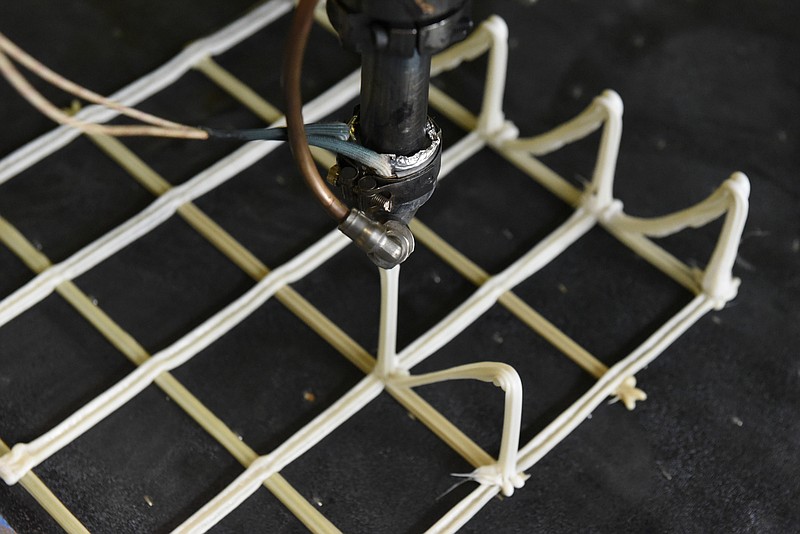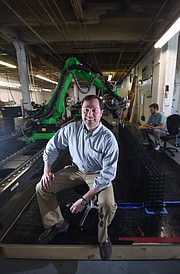Photo Gallery
Branch Technology expands beyond Incubator3D Printer to move into Riverside Drive warehouse
Nearly four years after moving his startup business to the INCubator at the Hamilton County Business Development Center, Branch Technology Founder Platt Boyd is "hatching" his growing business into a far larger warehouse facility midway between Chattanooga's downtown innovation district where the venture began and Chattanooga State Community College where it is building the world's first 3-D printed house.
By the end of the year, Branch Technology will graduate from the INCubator managed by the Chattanooga Area Chamber of Commerce and will move into 40,000 square feet at 1530 Riverside Drive, behind the Rock Creek outfitters warehouse.
The leased space is eight times bigger than the company's existing facility in the Hamilton County INCubator on the North Shore and will allow for more equipment and staff as the business grows its 3D printing operations.
"We'll have about 5,000 square feet for office space and the remainder of the space will be for our production," said David Fuehrer, an award-winning industrial designer who serves as director of sales and new business development for Branch Technology. "We looked at a number of sites for our expansion and we felt like this was a good site close to downtown and our current location and just down the road from one our current projects at Chattanooga State."
Fuehrer said the company has targeted to complete its relocation in five months.
"Our goal is to have production up and running there and then we will move our office and administrative functions once that space is built out," he said.
Branch Technology, which came to Chattanooga in 2014 to participate in the summer GigTank at The Company Lab, began with only three employees and a robot at the business incubator on the North Shore and has since grown to a staff of 35 and four robots with another four robots on order.
The company uses a technology that it calls cellular fabrication. Company founder Platt Boyd, an architect who walked away from a 19-year career in the construction industry to launch Branch Technology, wants to bring prefabricated products to the construction industry by making pieces in a factory and then shipping them to the work site where they're assembled like Legos or cellular structures.
"It's much more efficient," Boyd said in an interview last year. says, noting that studies show it's 97 percent more so and that it can sharply reduce building costs. "What this is is how structure is made in nature. We're at the smallest beginning steps."
Branch Technology is performing structural testing on the new 3D home at Chattanooga State and is now finalizing plans with its engineering firm to soon begin printing components for the house, which will be erected near Hamilton County's STEM high school at the riverfront campus.
Last year, Branch Technology joined with an California architectural firm, Foster + Partners, to win first place in a phase of a NASA competition to build a 3-D printed habitat for deep space exploration. The company is also participating in a multi-phase, $2.5 million 3-D Printed Habitat Challenge designed to advance construction technology needed to create sustainable housing for the Earth and beyond.
Branch Technology also was the 2016 winner of the Chattanooga Area Chamber of Commerce's Spirit of Innovation Award.
The company recently completed the installation of four hanging nature clouds in the main entrance of the Chicago Field Museum of Natural History for the museum's 125th anniversary celebration and last month completed the installation of 3D printed band shell for Nashville's ONEC1TY development, which is anchored by a new Microsoft development. The 20-foot high, 42-foot wide band shell is currently the tallest free-form, 3D printed structure in America and is formed by carbon-reinforced polymers shaped in geometric patterns to maintain its integrity and structure.
Contact Dave Flessner at dflessner@timesfreepress.com or at 757-6340

